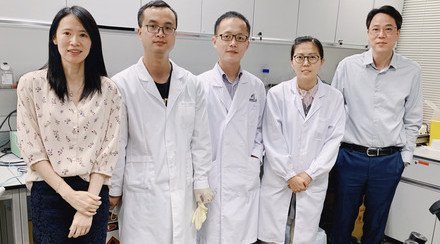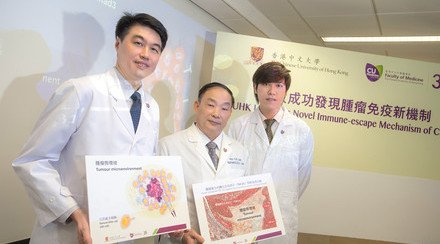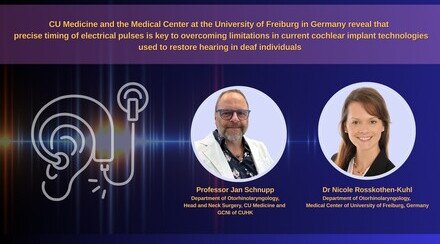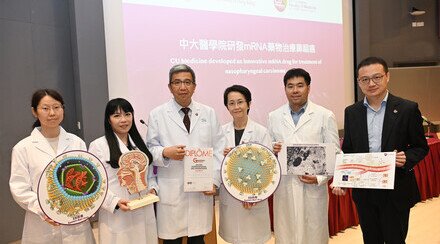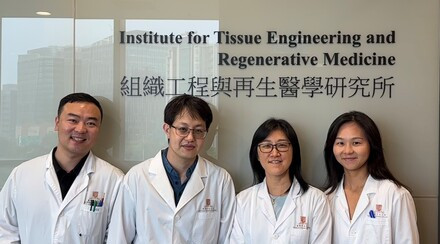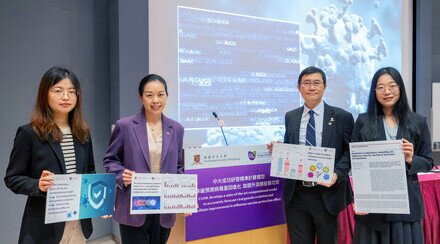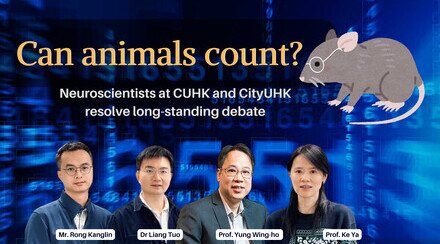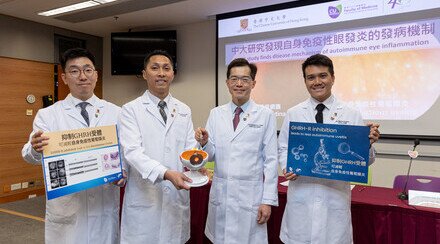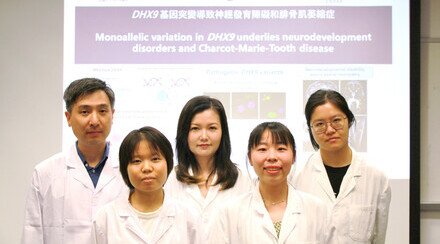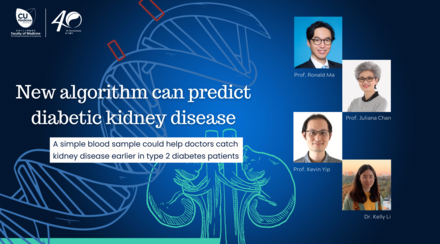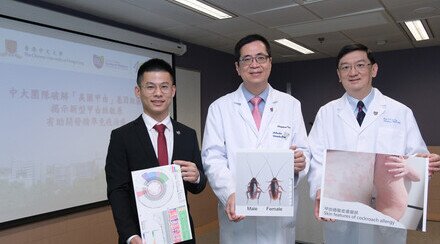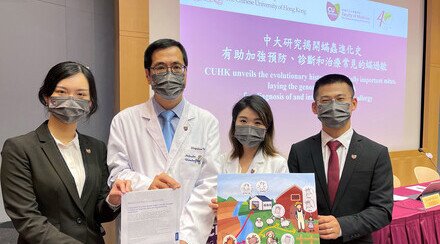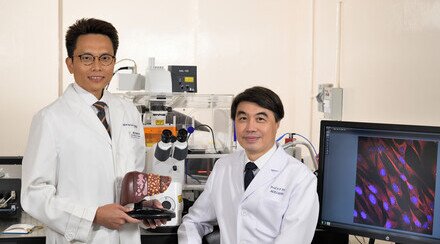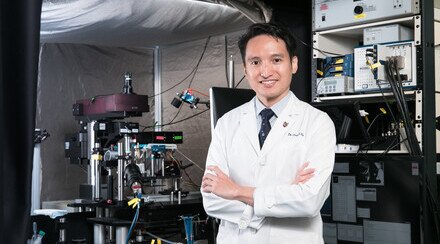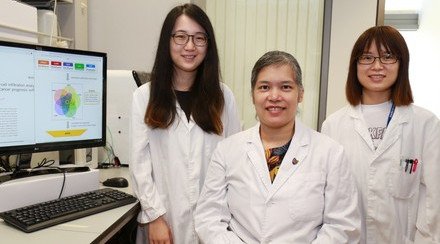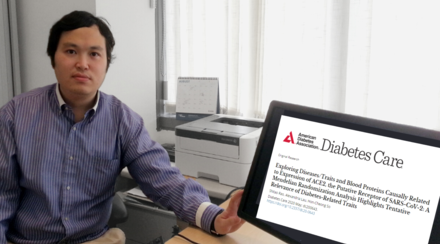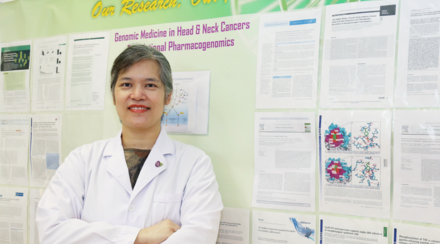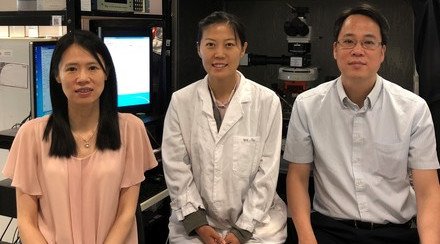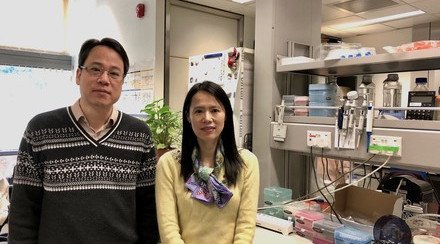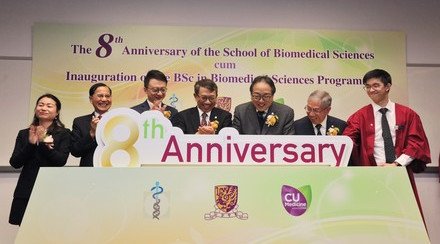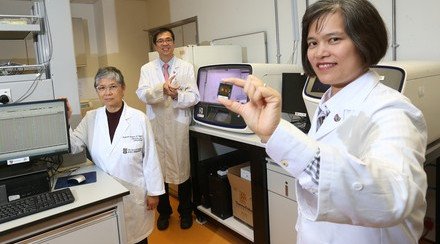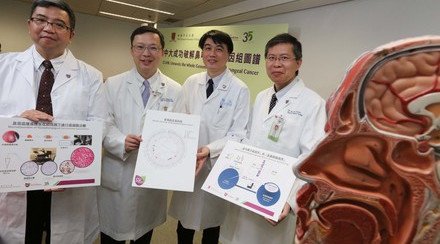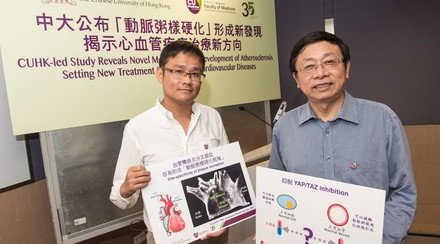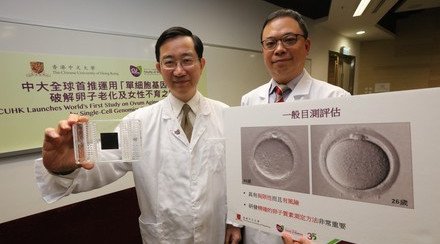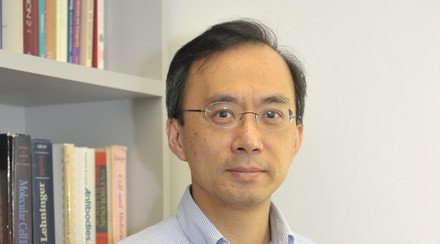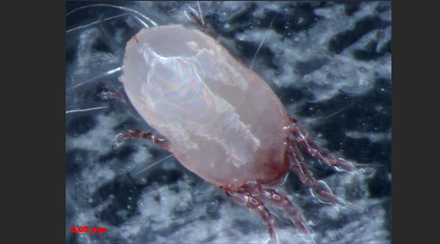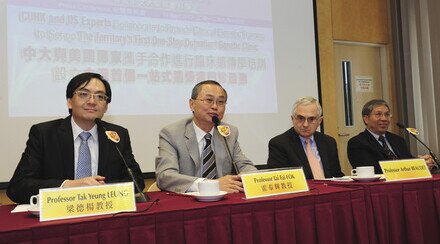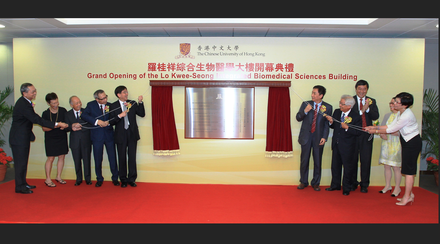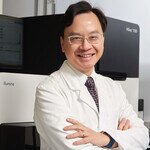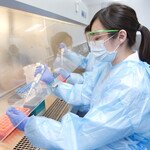A Joint Study by CUHK, PolyU and Western Sydney University Discovers how the Nervous System of Human Runners Generates More Energetically Efficient Running Forms
Running is a fundamental mode of human movement that most of us perform effortlessly without conscious thought. Some may run regularly for exercise, or even undergo serious, professional training for completing marathons. This apparent ease of running belies the enormous biomechanical complexity of running, the coordinated control of which is accomplished by an intricate neuronal network in the brain and spinal cord.
Researchers from the School of Biomedical Sciences and the Gerald Choa Neuroscience Centre of the Faculty of Medicine at The Chinese University of Hong Kong (CU Medicine), The Hong Kong Polytechnic University (PolyU), and Western Sydney University in Australia have recently discovered that the human nervous system is equipped with a mechanism that can flexibly adjust the motor commands for different running forms depending on the state of the body and the person’s prior running experience. This finding, which has just been published in Nature Communications, may allow researchers to design training strategies for promoting running forms that are more energetically efficient.
Researchers from CUHK, PolyU and Western Sydney University in Australia have recently discovered that the human nervous system is equipped with a mechanism that can flexibly adjust the motor commands for different running forms depending on the state of the body and the person’s prior running experience. This finding has just been published in Nature Communications. (From right) Professor Vincent CHEUNG, Assistant Professor of the School of Biomedical Sciences at CU Medicine; Dr Ben CHEUNG, CUHK medical alumnus; and Dr Chao-ying CHEN, a paediatric physical therapist and Assistant Professor of the Department of Rehabilitation Sciences at PolyU.
Neural building blocks of human running uncovered by machine learning
To study how the nervous system controls running at different ages and training stages, the research team recruited multiple groups of healthy volunteers, including pre-schoolers, physically inactive adults, adult runners in training, and experienced and elite marathoners. From each subject, they recorded the electrical activities from multiple muscles and the force the body exerted onto the ground as the subject ran either over-ground or on a treadmill. After data collection, the team used a sophisticated machine learning algorithm to identify fixed co-activation patterns of multiple muscles, known as muscle synergies, that are embedded within the muscle data.
Professor Vincent Chi Kwan CHEUNG, Assistant Professor of the School of Biomedical Sciences at CU Medicine and the lead author of the study, remarked, “Since muscle activities originate from the brain and spinal cord, muscle synergy is a window through which we can have a glimpse of how the human nervous system generates motion. Muscle synergies are believed to be the neural building blocks of movement, functioning like basic alphabets that can be flexibly recombined by the nervous system to result in diverse behaviours. Our goal here is to analyse how these building blocks for running may themselves change across age and training groups.”
Muscle synergies fractionate as children mature
Dr Chao-ying CHEN, a paediatric physical therapist, Assistant Professor of the Department of Rehabilitation Sciences at PolyU and a co-author of this study, further explained the important considerations for children, who have body-builds that are very different from those of adults, with muscles of weaker strengths and less-developed postural balance.
“Our team discovered that some of the pre-schoolers’ synergies may gradually reorganise themselves by fractionating into synergies comprising fewer muscles over the years of development,” said Dr Chen. “Indeed, from the biomechanical perspective, the pre-schoolers’ synergies appear to be well suited for running with their less-mature body-builds.”
Marathoners learn novel muscle synergies to run more efficiently
Besides development, training may also lead to the reorganisation of muscle synergies for adult runners. The research team found that months to years of training may induce merging of specific pre-training muscle synergies into units that comprise more muscles. Remarkably, among the adults, the presences of specific synergy merging patterns are associated with either enhanced or reduced running energetic efficiency.
Professor Roy Tsz Hei CHEUNG
Professor Roy Tsz Hei CHEUNG, Professor of the School of Health Sciences at Western Sydney University and a co-lead author of this study who began contributing to this work when he was Associate Professor from the Department of Rehabilitation Sciences at PolyU, elaborated. “It is notable that some experienced runners with unexpectedly low efficiency actually ran with the efficiency-reducing merging patterns. Our analysis is perhaps uncovering some muscle patterns that these runners inadvertently acquired over their training, though they would have to eventually learn to suppress these patterns before they could be the true elites.”
Dr Ben Man Fei CHEUNG, the study’s co-first author who collected and analysed most data with the team when he was an MBChB student at CU Medicine, also remarked, “These findings may allow future researchers to design running training programmes or devices that facilitate the learning of these efficiency enhancing merging patterns, thus helping runners to run for longer with more ease. If you are training for your next marathon, you are not just training your cardiovascular fitness, but also your brain.”
This study is supported in part by the CU Medicine Faculty Innovation Award, and in part by the Hong Kong Research Grants Council. Other contributors of this study include Dr. Janet ZHANG and Ms. Zoe CHAN of PolyU, and Dr. Sophia HA of CUHK. The original study can be accessed here: https://www.nature.com/articles/s41467-020-18210-4.


